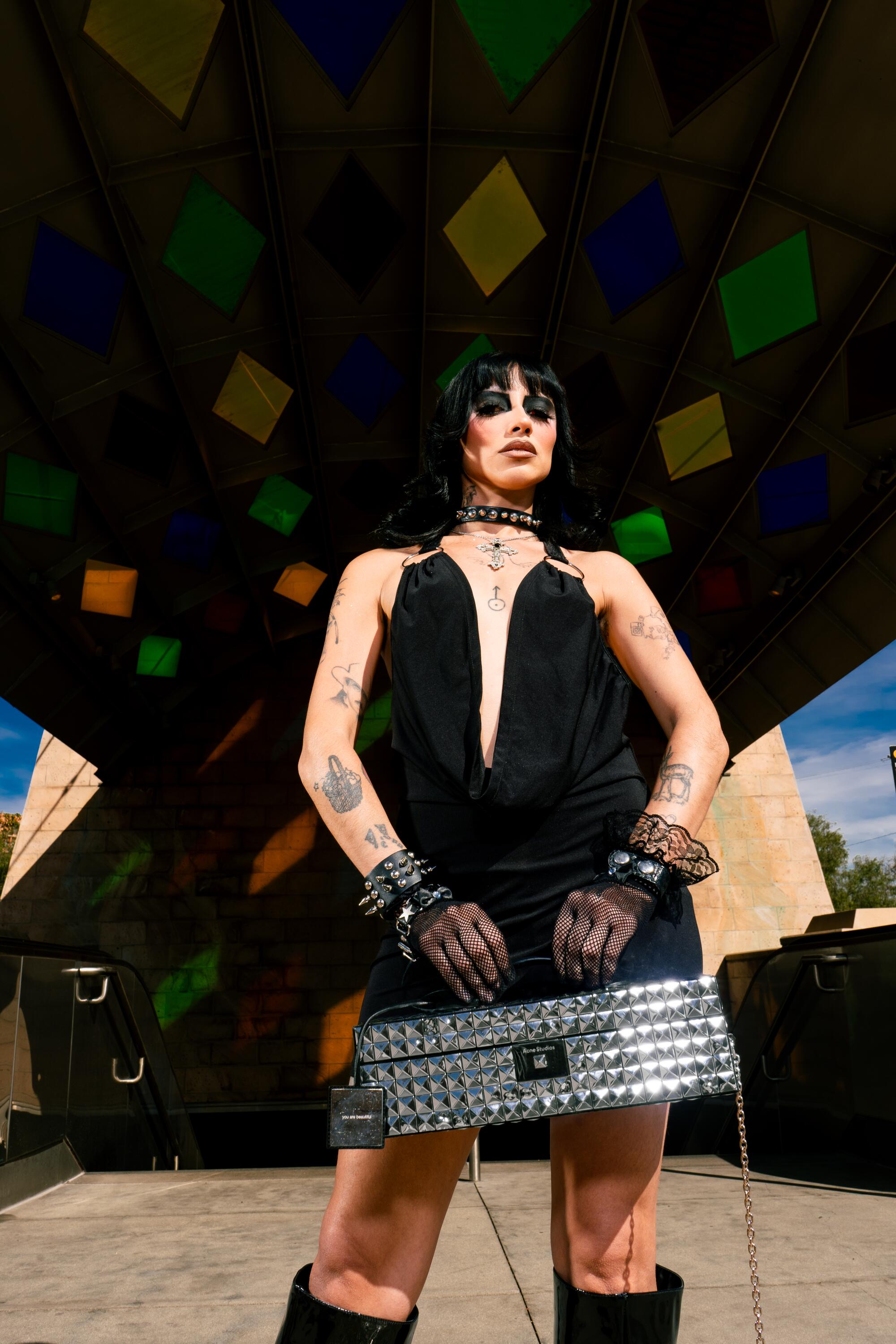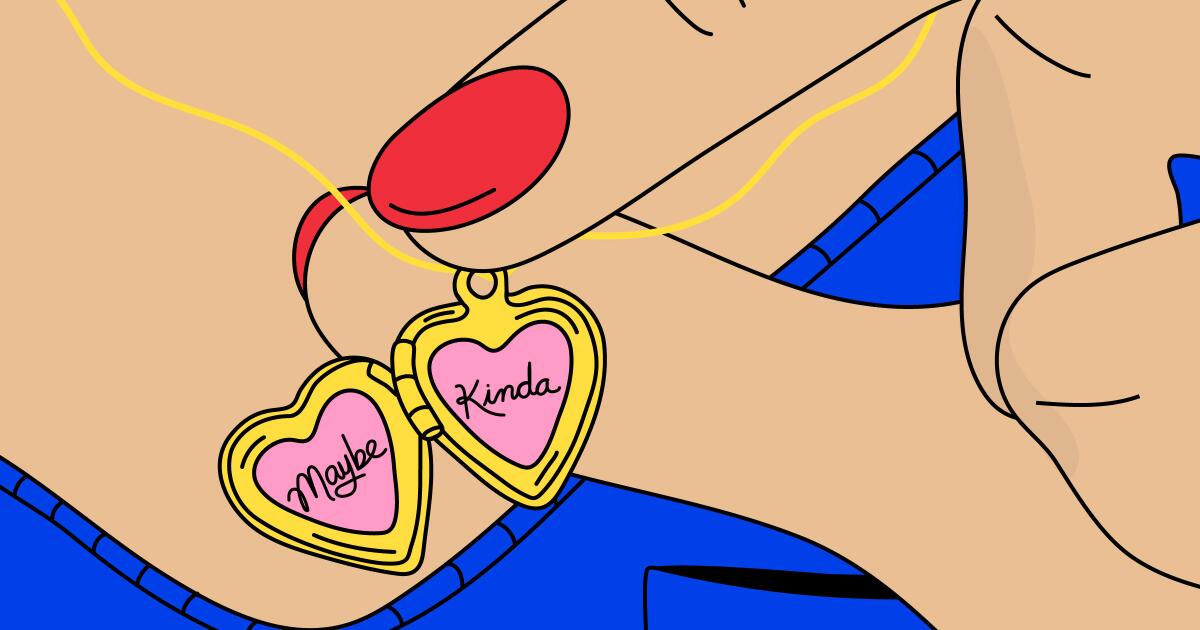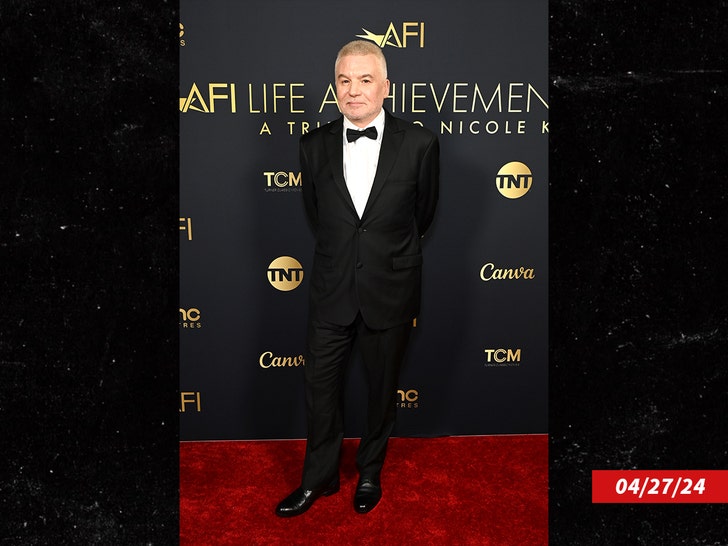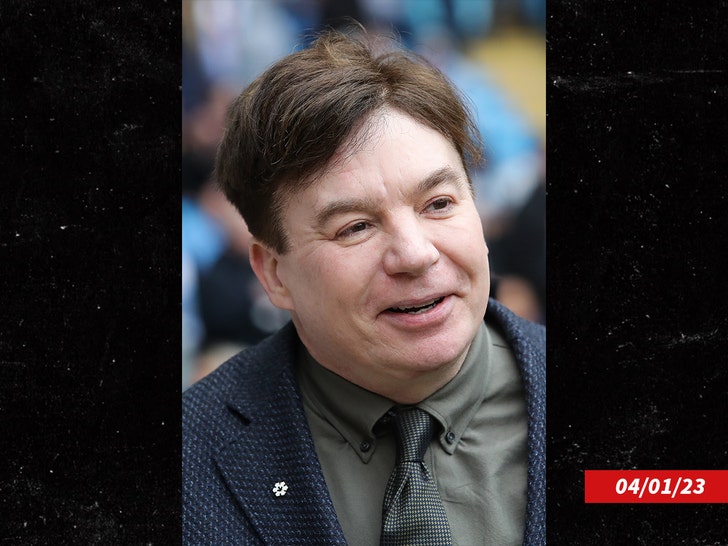Lifestyle
Your 12-year-old emo self stays winning. Giselle Lopez is a case in point

A bag becomes a different thing entirely when worn by different personalities — similar to how no one perfume smells the same on two different people. To test out this idea, we invited four different artists to style the same bag into their personal look and lifestyle for one day, dreaming up places across L.A. where they would wear it. The bag? The Acne Studios rivet wine box bag from the brand’s spring/summer ’24 collection. It felt like a bag tough enough to withstand a long day in L.A. and lightweight enough to not drag you down.
In the third installment of the series, Giselle Lopez, a model, stylist and DJ, takes the bag to Mariachi Plaza, where she sees cumbia sonidera bands play on the weekends with friends. For Lopez, the Acne Studios bag summons her inner emo tween who just won’t quit. “I’ve tried colorful styles. I’ve tried classy or minimalist,” she says. “But I always go back to all black, studs, spikes.”
Who are you and what do you do?
I’m a DJ, a model, stylist and I also run a party with my friend Dante called Discoteka. We go as DT:33. We do them monthly and invite a lot of DJs from Mexico or outside of L.A., just to bring in new music and new sounds to people.
Describe your personal style.
I would say my 12-year-old emo self really won. Everything is always inspired by that. I’ve tried colorful styles. I’ve tried classy or minimalist. But I always go back to all black, studs, spikes. Really into punk as well. That has been the main inspiration.
I’ve tried colorful styles. I’ve tried classy or minimalist. But I always go back to all black, studs, spikes.
— DJ, model and stylist Giselle Lopez
Talk to me about dreaming up an outfit around this Acne Studios bag.
I think about accessories first because they always make an outfit. So if you want a choker — which is usually what I like to style myself with, I like cross necklaces, spike chokers, all of that — I usually look at my [other] accessories I have to style, which is a bag. From there I go, “Maybe I want to do a dress, a skirt, see what I have in my closet.” I usually search on EBay. EBay is my No. 1 place to shop. I go on my Notes app a lot. I write down, “black halter top, belt, skirt …” and then I go back to it.
How does sense of place inform sense of style? How do you travel through L.A. with style in mind?
The party scene in L.A. has always inspired my fashion ever since I started playing out here. I was a little raver girl five years ago, so just seeing all the colorful looks people wear that are very inspired by Japanese culture, Japanese raver fashion, Fruits magazine and all that. I like to mix it up by doing a little raver in there, but also keep it still very punk and dark. I chose [to bring the bag] to Mariachi Plaza because when I first moved here, I spent a lot of time in Boyle Heights, and this became one of my favorite spots. On weekends, they would have cumbia sonidera bands playing here and I would come and see them with my friends. My grandmother is from Guadalajara and my little brother plays in a mariachi band, so I grew up around a lot of mariachi. Seeing men in their mariachi suits, it’s very special to me. It feels like home.

Producer: Mere Studios
MUA: Andrés Nuñez

Lifestyle
Yikes! You’re stuck in a situationship. When to stick around or get out

Meagan Culberson, 32, was on a third date with a guy she met on Hinge when she decided it was time to ask him a make-or-break question: What are you looking for?
They’d gone on fun dates and she was interested in getting to know him better, but only if they were on the same page. She wanted a long-term relationship.
When she broached the conversation with him, he told her that he wanted to “go with the flow” — in other words, he wasn’t dating with intention like she was.

Dating in Los Angeles can be messy. In “Date Cute” we’ll explore common dating problems and provide tips on how to date better.
“It was kind of like an epiphany,” says Culberson, the founder of Single Girls Club, a Los Angeles-based lifestyle brand that advocates for the empowerment of single women. Now knowing that they each had different goals, she was left with two options: 1) continue dating him and see where things went, or 2) end it before she got hurt.
In her 20s, Culberson had been through situationships — a term for a romantic or intimate connection that mirrors a relationship but lacks commitment — and they caused her a lot of confusion and pain. She had done a lot of self-reflection since then and knew she didn’t want to end up in another one, so she decided to cut things off with the guy.
“It was really hard,” she says, adding that she was starting to like him. “But if I had stepped back into those old patterns, all of that healing that I’d done would’ve just been a waste.”
Although situationships have probably been around since the beginning of time, these undefined entanglements — ones that fall in the murky, gray area between a defined relationship and casual dating — seem to have become more common with the rise of dating apps, hookup culture and the broadening of traditional relationship dynamics (i.e. non-monogamy, polyamory, etc.), relationships experts say.
“When [a situationship] becomes toxic and it’s hurting your mental and possibly physical health, then you have to figure out a way to get out of that situation.”
— Denise Brady, a marriage and family therapist
A recent YouGov survey, which polled more than 1,000 U.S. adults, found that 39% of people had been in a situationship before, and of people between the ages of 18 to 34, that number increases to 50%.
In a 2022 report, Tinder declared “situationships” a top trend and reported a 49% increase in members adding the phrase to their bios with young singles saying they “prefer situationships as a way to develop a relationship with less pressure.” Also, after 34% of Hinge users reported falling into a situationship in 2022, the app added a feature called “Dating Intentions” so daters could indicate upfront what they were looking for (i.e. life partner, short-term relationship, figuring out my relationship goals, etc.). Tinder and Bumble offer a similar feature.
So why does it seem like more people are getting into situationships? One answer is exhaustion, says Denise Brady, a marriage and family therapist based in Long Beach. “[Some people] just feel like ‘Man, I’ve been through this so many times, I really don’t want to put myself out there, so at least I have my sexual needs met, maybe not my emotional needs, but this situationship is working for me,’” she says.
Though these unclear connections tend to get a bad reputation, relationship experts say they aren’t inherently good or bad. For some people, a situationship can provide exactly what they need at a certain time in their life, and can be mutually fulfilling as long as both parties are on the same page and one person isn’t abandoning their true wants.
“But when it becomes toxic and it’s hurting your mental and possibly physical health, then you have to figure out a way to get out of that situation,” says Brady.
Given that situationships often mirror full-fledged relationships, it can be difficult to break free from them. If you’ve found yourself in one and you want to end it, here’s what relationship experts say you should do.
Be honest with yourself
Whether you were initially OK with not having a title or you’ve been secretly holding out hope that the other person would eventually want a relationship, experts say it’s completely normal — and OK — to change your mind about what you want.
“You’ve got to know how you feel,” says Patrick Yao, a marriage and family therapy trainee at Pelican Cove. “Let’s make sure first and foremost that you’re taking care of yourself, so you can make a comfortable, healthy decision.”
Yao recommends reflecting on these questions:
- How do you feel when you’re with the person? (I.e. Do you feel safe? Distant? Supported? Respected? A lack of engagement?)
- What are you like when you’re not with the person?
- Do you share the same relationship goals? Are you looking for something more?
Speak up
Once you’ve gotten clear about your dating goals, Sara Stanizai, a marriage and family therapist based in Long Beach, suggests having a conversation with the person you’ve been seeing to get clarity on what they want — and then you can decide if that works for you. However, she warns that “you should be prepared to lose the relationship as you know it.”
Start the conversation by explaining what you desire (e.g., a committed relationship), but don’t blame the person or give any ultimatums, Stanizai says.
“That way, not only are you respecting the other person and only speaking for yourself, but it is also harder to dispute or argue your points,” she says. For example, if you tell someone that you aren’t getting what you need out of the situationship, it’s tough to have a rebuttal.
But it’s also fine if you don’t want to have a formal chat about it, Brady says. “Sometimes those conversations make it harder” to walk away.
In that case, she recommends cutting things off with the person and going no contact, or slowly decreasing your communication with them over time. (Pro tip: It’s also helpful to have an accountability friend whom you can text when you feel an urge to reach out to the person you’ve been dating, she says.)
Take time to heal
Though situationships lack titles, it doesn’t mean they hurt any less when they come to an end. In fact, some people argue that these entanglements are just as — and sometimes more — painful than an official relationship.
“You don’t have clarity within situationships to start that [healing] process, so that’s why some people feel like they’re stuck in limbo,” Yao says. “It gets into this prolonged emotional distress.”
Therefore, it’s crucial to give yourself the same amount of time, space and grace to heal from a situationship as you would an official relationship. (Reminder: Friends and family, if you know someone going through this, please don’t belittle their feelings just because they didn’t have a title.)
Be kind to yourself, says Culberson, and remember that “you are worthy of what you desire.”
P.S. If you need some extra encouragement or commiseration, check out the situationship-inspired playlist that our readers helped us curate:
Lifestyle
As National Poetry Month comes to a close, 2 new retrospectives to savor

W. W. Norton & Company, Alice James Books

W. W. Norton & Company, Alice James Books
With National Poetry Month comes spring flowers and some of the year’s biggest poetry publications. And as April wraps up, we wanted to bring you two of our favorites — retrospective collections from two of the best poets of the late 20th and early 21st centuries: Marie Howe and Jean Valentine.
Howe’s New and Selected Poems makes a concise case for Howe’s status as an essential poet. The New & Collected Poems of Jean Valentine gathers all of the beloved late poet’s work, a monument to a treasured career.
New and Selected Poems by Marie Howe
Marie Howe is writing some of the most devastating and devastatingly true poems of her career — and some of the best being written by anyone. Her subject matter, from a bird’s eye, is simply the big questions and their non-answers: What are we here for? What does it mean to do good? What have we done to the environment? What are the consequences and what do we who are here now owe to those who will follow us? And yet her tone and straightforward delivery make her poems as approachable as friends. Howe is the rare poet whose poems one wants to hug closely for company, companionship, and empathy; and yet they are works of literature of the highest order, layered, full of booby traps and shoots and ladders that suddenly transport one between the words. It’s tough love that these poems offer, but it’s undeniably love.
This first retrospective gathers a book’s worth of new poems along with ample selections from of Howe’s four previous collections, each of which was a landmark when it was published. Her nearest antecedent might be Elizabeth Bishop, who also didn’t write very much, or didn’t publish very much, but everything she wrote was good if not capitol-G-Great. Howe is best know for What the Living Do (1997), which remains one of the great books on youth and grief, regret, and moving forward if not moving on. It regards a world in which “anything I’ve ever tried to keep by force I lost.” Startling, almost koan-like statements like this erupt out of unassuming domestic scenes, making everyday life into high drama.
The typical speaker of a Howe poem is a woman who seems much like Marie Howe, even when she is speaking through the voice of the biblical Mary, as she does in Magdalene (2017): “I was driven toward desire by desire.” She is serious except when she’s funny, though she’s rarely laugh out loud funny — it’s more of a kind of internal laughter, either like blossoming light or paper rustling in one’s chest. She is consoling, except when she is taking herself and readers to task, bowing under the simple, Herculean responsibilities that come with living a life, being a parent. She’s tough, sometimes even stoic, except that in almost every poem there is a moment of surprise, a revelation, a piercing insight that injects a kind of pure ecstasy.
Some of the new poems are among the best Howe has written, making them among the best period. Set “In the middle of my life — just past the middle,” these poems grieve lost friends; reckon with the sudden adulthood of a daughter; lament the destruction of the environment; and take the moral measure of this very disturbing era. Each of these everyday dramas becomes an access point for the deepest kind of human reconciliation, where we must finally admit where language fails us. These poems also feature a recurring character, “our little dog Jack,” who, with all best intentions, becomes one of Howe’s most devastating metaphors. But all metaphors have their root in plain fact. As Howe writes in “Reincarnation,” one of her best poems, “Jack may be actually himself — a dog.”
Light Me Down: The New and Collected Poems of Jean Valentine
This is one of those monumental events in American poetry: the life’s work of a major poet gathered in one big book, an opportunity to revel in all that Jean Valentine accomplished in her long and prolific career. As a young poet, Valentine (1934-2020) won the Yale Series of Younger Poets prize in 1965, for her debut collection, Dream Barker. In 2004, she won the National Book Award for Door in the Mountain: New and Collected Poems 1965-2003. In between, and after, she was always well regarded by the mainstream poetry establishment, winning most of the prizes available to an American poet.
But Valentine’s real influence was as a friendly ambassador to and from the avant-garde. It’s hard to pin Valentine’s poems down: I wouldn’t call them experimental, but they are anything but straightforward in their slippages of thought and wide leaps of association. Fairly early in her career, Valentine begin working in a style that had her teasing the reader with images, gently suggesting the way the poem should go, until, perhaps, a thunderclap at the end disturbs the calm. She always knows where to end. Pick almost any poem and the last couple of lines will shock you with their unlikely inevitability.
Valentine writes about everything — love, death, sex, the roiling political situations of the last half-century — with simultaneous candor and mystery: “I have been so far, so deep, so cold, so much,” she says prophetically in an early poem. She asserts that poetry can be made almost entirely through suggestion, that the poet must trust the secret links between one word and another, and trust that the reader will be willing to travel with the poet along those underground currents. In a short poem, a haiku from 1992, “To the Memory of David Kalstone,” dedicated to the literary critic who died in 1986, Valentine offers as succinct a statement of her poetics as one could want: “Here’s the letter I wrote,/ and the ghost letter, underneath—/ that’s my life’s work.” Valentine’s poems draw our attention to the words beneath the words, what’s said between them, in all the white space surrounding the poems.
Elsewhere Valentine opts for simple observations, stirred by a bit of mystery, as in the brief elegy “Rodney Dying (3)”:
“I vacuumed your bedroom
one gray sock
got sucked up it was gone
sock you wore on your warm foot,
walked places in, turned,
walked back
too off your heavy shoes and socks
and swam”
There are no sudden bolts of profundity here, nothing, really, that you could call insight, at least not overtly. Instead, Valentine asks an object, the sock, to carry the grief. This is a technique poets call the “objective correlative” — it’s an image that stands in for an emotion or knot of emotions. That unassuming object, or really just the word for it — sock — becomes a vessel, a kind of canopic jar to contain grief, but also to let it rattle around a bit. The poem ends with what might be an allegory for death, but is also a celebration of Rodney’s vitality. The language is as plain as can be, and yet I exit the poem with uncertainty, equally hopeful and despairing. Valentine is an expert at tensing these sorts of contradictions against one another. The emotional climate in Valentine’s poems is ambivalent in the best way, lit by contradictory energies.
And while this book is a monumental celebration of an extraordinary legacy, it is also sad to hold: Valentine was in an inexhaustible and generous force in American poetry until so recently. It feels impossible to accept the fact that she is dead while reading poems that are so profoundly alive.
Craig Morgan Teicher is the author of several books, including The Trembling Answers, which won the 2018 Lenore Marshall Poetry Prize from the Academy of American Poets, and the essay collection We Begin in Gladness: How Poets Progress.
Lifestyle
Mike Myers Debuts White Hair in First Public Appearance in Over a Year

Mike Myers returned to the spotlight for a rare public appearance this weekend … but folks had to do a double take, ’cause nobody could recognize him with his new hair color.
The actor stepped out Saturday for the 49th AFI Life Achievement Award Gala in L.A. — where Nicole Kidman was being honored — which marked his first time at a public event in about a year.

Mike looked unrecognizable with short white hair — but was rocking it proudly as he spoke onstage at one point … and posing for tons of pics before heading inside, all smiles.
He was even taking photos with fans too … acting goofy and posing for a bunch of selfies.
Mike has always kept a relatively low profile … as he and his wife, Kelly Tisdale, are known for keeping their home life super private. So, seeing MM out and about like this is pretty remarkable — especially since he’s a silver fox now, and totally leaning into it.

The last few times Mike was out in public was in April and May of 2023 — in April of that year, his was quite a bit longer … and more importantly, it was the same color of brown we’ve seen him in for years now.

In May, the guy was at a basketball game — with pretty damn good seats, it seems — but there … he was wearing a beanie, covering up his ‘do. Since then, he’s been kinda MIA.
Anyway, it was clearly a big enough occasion to get Mike out of the house and into the public eye again — remember, this was all about Nicole … and anyone who’s anyone showed up to give her her flowers, including a ton of celebs.
Among the stars in attendance … Reese Witherspoon, Joey King, Michelle Pfeiffer, Jane Seymour, Miles Teller, Naomi Watts, Morgan Freeman and lots of others.
Mike certainly stood out though … and we gotta say, he’s looking real sharp these days!
-

 Kentucky1 week ago
Kentucky1 week agoKentucky first lady visits Fort Knox schools in honor of Month of the Military Child
-

 News1 week ago
News1 week agoIs this fictitious civil war closer to reality than we think? : Consider This from NPR
-

 World1 week ago
World1 week agoShipping firms plead for UN help amid escalating Middle East conflict
-

 Politics1 week ago
Politics1 week agoICE chief says this foreign adversary isn’t taking back its illegal immigrants
-

 Politics1 week ago
Politics1 week ago'Nothing more backwards' than US funding Ukraine border security but not our own, conservatives say
-

 News1 week ago
News1 week agoThe San Francisco Zoo will receive a pair of pandas from China
-

 World1 week ago
World1 week agoTwo Mexican mayoral contenders found dead on same day
-

 Politics1 week ago
Politics1 week agoRepublican aims to break decades long Senate election losing streak in this blue state














